Okutan 奧丹
Add: 3-340 Kiyomizu, Higashiyama-ku, Kyoto / 京都市東山区清水3-340
Tel: 075-525-2051
Hours: 10:30am-5pm (Closed on Thursdays)
Website: webkyoto.com/okutan/
Price: Yudofu set meal ¥3,150; traditional tofu meal ¥4,200
Kyoto is to tofu what Naples is to pizza. It goes without saying that when in Kyoto, you have to have a tofu meal. This is not what you can get as prepackaged squares from supermarkets, we are talking about delicate handcrafted tofu, produced every morning in small shops by artisans who have been making tofu for decades. Okutan, one of the oldest and most authentic tofu restaurants in Kyoto, is a perfect place to have a tofu meal. Founded about 350 years ago as a vegetarian restaurant serving Buddhist monks, Okutan serves just two things: a tofu set meal (yudofu) and a traditional tofu set meal.
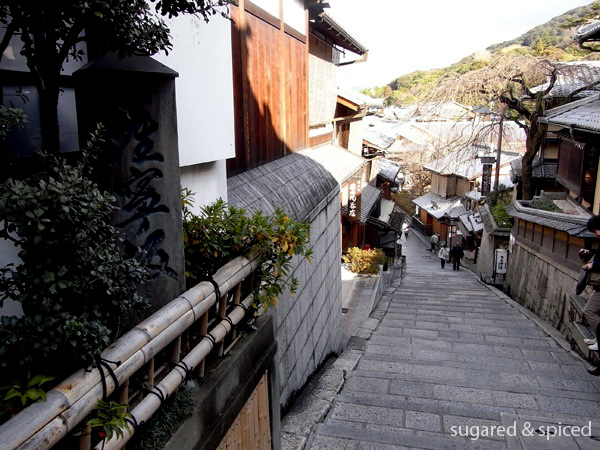
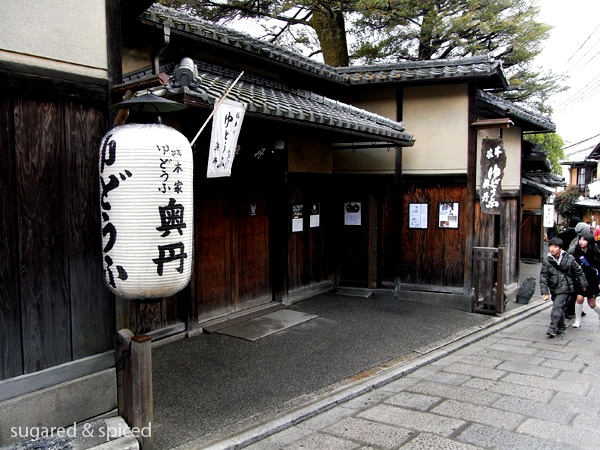
Okutan is located near the crossover of sannen-zaka (三年坂) and ninen-zaka (二年坂). If you visit Kiyomizu-dera (清水寺) early in the morning, which you should as the famed temple gets crowded later in the day, Okutan would be an ideal place for lunch. Come early at 11:00am to avoid the wait.
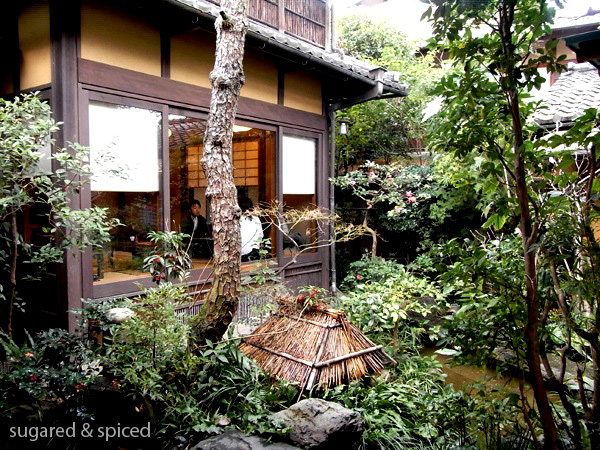
After putting our shoes away at the entrance, we were led through the garden into a spacious tatami room. The huge windows lets in plenty of natural light and takes in the garden in plain view. Hot tea was promptly served, a godsend for us after a whole morning out in the cold Kyoto December air.
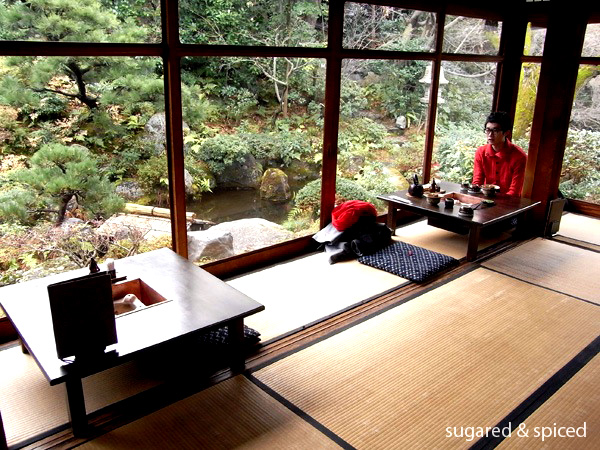
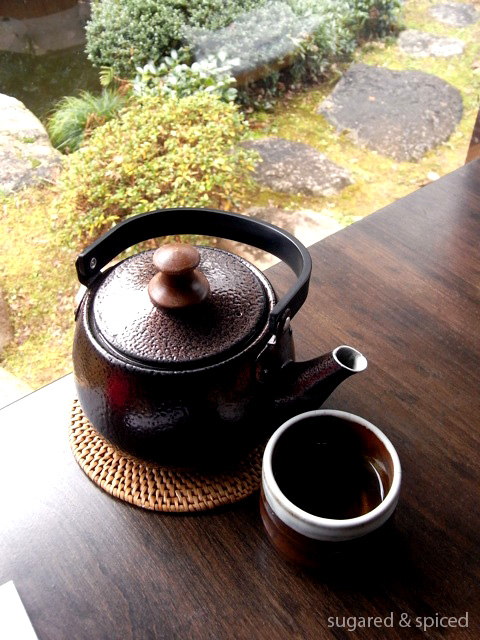
The first dish was 胡麻豆腐 black sesame tofu served with a dab of fresh wasabi and light soy sauce. This actually isn’t tofu, but a look-alike made from pureed sesame seeds and water, then thickened with potato or kuzu starch. The texture was interesting – it was a little bit sticky, almost like yokan (羊羹). Subtle and delicious.
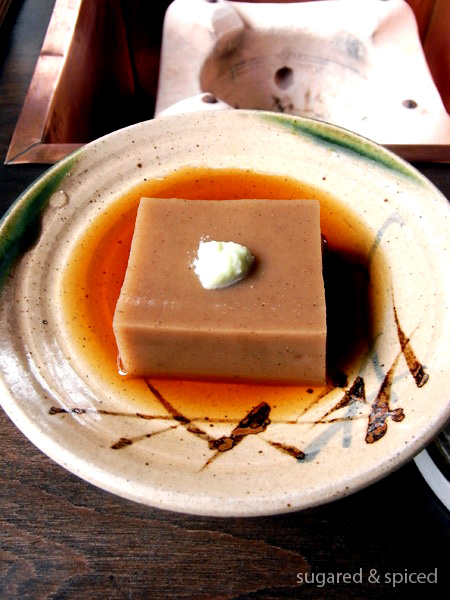
Next came the skewered 木の芽田楽 firm tofu grilled with miso glaze. This dish is the most intensely flavored of the set meal – the miso glaze was sweet and salty with an evident hint of citron – a good contrast in both texture and flavor with the previous dish.
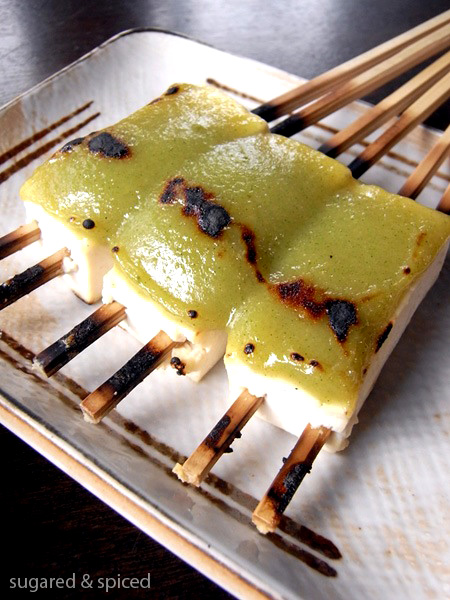
The 精進揚げ vegetable tempura was beautifully presented. Its delicately thin coating added the necessary crisp without masking the natural sweetness of the vegetables.

I’m a big fan of とろろ汁 grated mountain yam, though the stick consistency might not be a hit with everyone. With some strong self-inhibiting effort, I saved most of this to have with the rice, to be served after the main tofu dish.
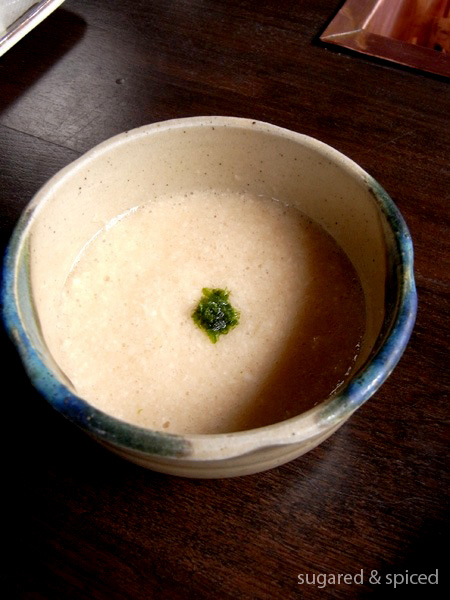
The main course of the meal, of course, is more tofu. We ordered both the 湯どうふ yudofu, which is silky soft, and the 昔豆腐 traditional tofu, which is firmer and coarser in texture. I loved both. The difference in terms of flavor is quite subtle, though the traditional tofu was slightly sweeter than the silken tofu. The broth in which the tofu was cooked was unflavored other than the single piece of kelp at the bottom of the pot, so the natural taste of the tofu is preserved.
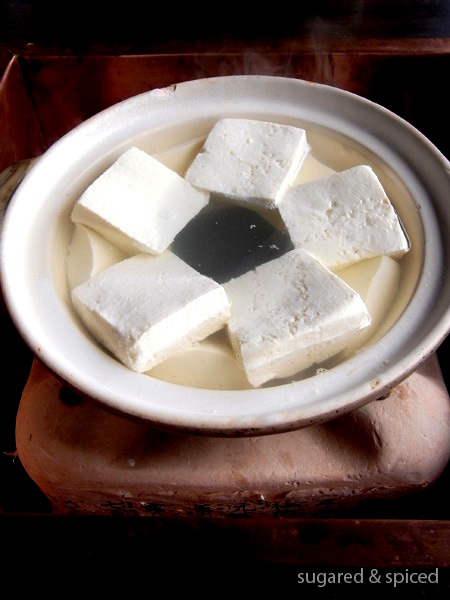
Just a few words on the production of tofu. Authentic, handcrafted tofu relies on high-quality soy beans, good water in which to soak and boil them, and of course the expertise of the tofu maker. What we get in supermarkets today is lacking in the pure taste of soy beans and the flavor of their protein, an unfortunate result of mass production.
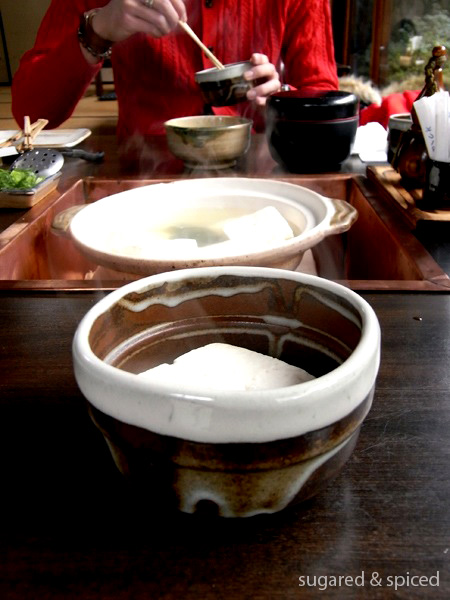
I highly recommend eating the first few pieces of tofu just by themselves for the pure flavor, after which you can add soy sauce and chopped scallions for additional flavoring. This special soy sauce is very light and seems to be watered down with soup stock and probably was imbued with other natural flavoring. It complements the tofu, but does not overpower it.
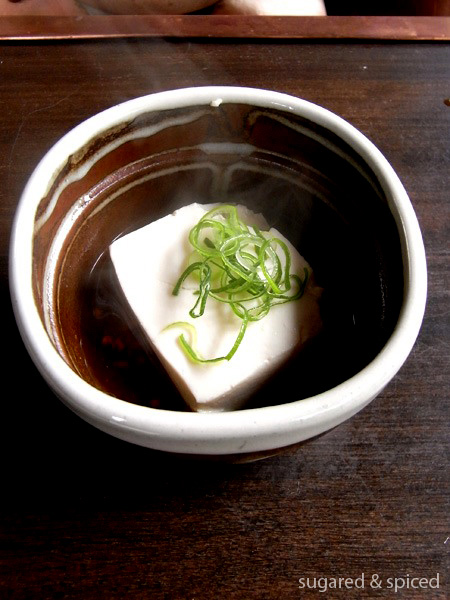
I ended the meal by pouring the grated yam over a bowl of perfectly cooked rice, and polished that off with some pickles that came with the set.
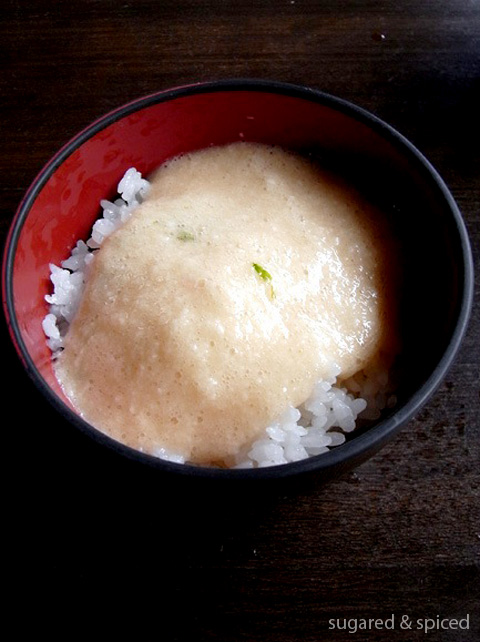
Though the meal consisted mainly of tofu, I was utterly satisfied and surprisingly full. For those who think unadorned tofu is bland, please, try Okutan when traveling in Kyoto – you will never look at tofu the same way after this revolutionary experience.
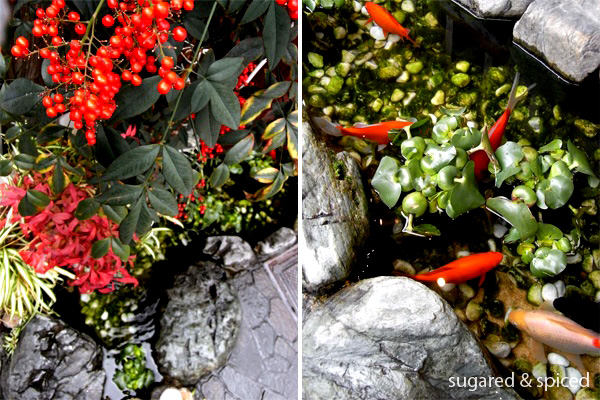
I am planning to follow your schedule on 1/1/11. What time do we need to leave our Hotel so we can have lunch at Okutan at 11am. Did you make reservation? Thanks
Hi Irving, we left the hotel at around 8:30, got to Kiyomizu-dera at around 9:30 (breakfast + traveling was around 1 hr), spent about 1 hour at the temple, then headed to Okutan (walking very slowly, popping into stores here and there) and got there at around 10:55am. I suggest you find the restaurant location first and then if you are still early, you can walk around ninen-zaka and sannen-zaka. The time you need really depends on where you live (ie transportation time) and how slowly you want to look around within the temple grounds. Also, I noticed that you are going on 1/1 and I know many temples/shrines in Japan will have a huge ceremony – you might want to look into the specifics for Kiyomizu-dera on that day, there might be a lot of people.
We didn’t make a reservation at Okutan and since we were the first one to get there, there was no problem getting seats. Hope this helps :)
The way you describe the food and how you tried to break it down to figure out what the sauce is showed that you know how to cook too. Good job!
Thanks for your reply and yes Kiyomizu and most of the temple will be crowded on the first but I thought that will be fun. We are staying at The Miyako so it is kind of close to Okutan according to the map. I hope they are open during the NY holiday. Thanks again
Hello. It’s very funny that your resturant have the same name as my last name. But it looks very delicious
can you please quote the prices of the food in japan?so i’ll have an idea how expensive it is.
hi there, prices are already included in the post for your information.